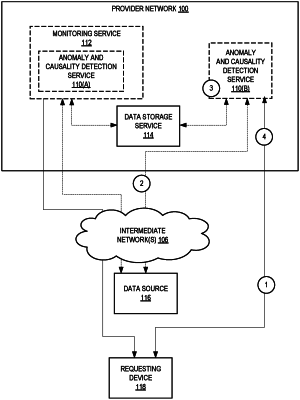| CPC H04L 63/1425 (2013.01) | 20 Claims |

|
1. A computer-implemented method comprising:
receiving time-series data including a first time series and a second time series;
performing anomaly detection on the time-series data to detect anomalies using an anomaly detection model;
detecting a causal relationship between measures of the time-series data, wherein a set of measures are related when a first measure of the set of measures has a causal influence on a second measure of the set of measures, wherein a measure is a numerical or categorical quantity that describes the time-series data, and wherein detecting a causal relationship between measures of the time-series data comprises:
grouping the anomalies by measure to generate anomaly groups, wherein anomalies in the first time series that relate to the first measure are grouped together with anomalies in the second time series that relate to the first measure and anomalies in the first time series that relate to the second measure are grouped together with anomalies in the second time series that relate to the second measure;
scoring the anomaly groups;
inferring causal relationships between measures of the anomaly groups to generate a causal data structure; and
attributing anomalies of downstream measures to upstream measures using the causal data structure; and
outputting a result of the anomaly detection and the causal relationship between measures of the time-series data in a graphical user interface.
|